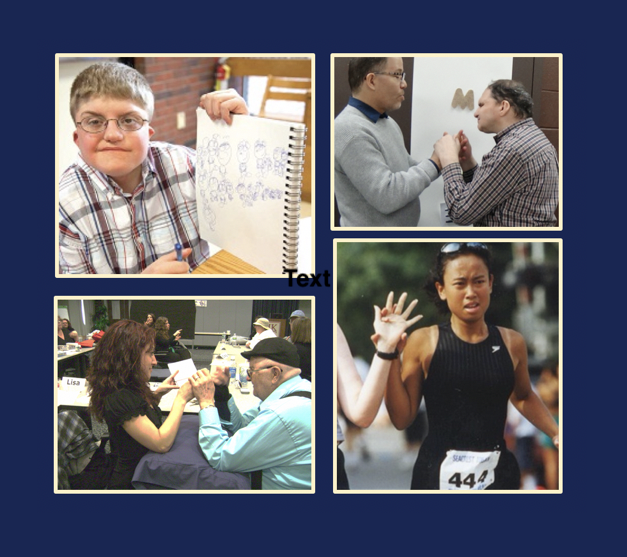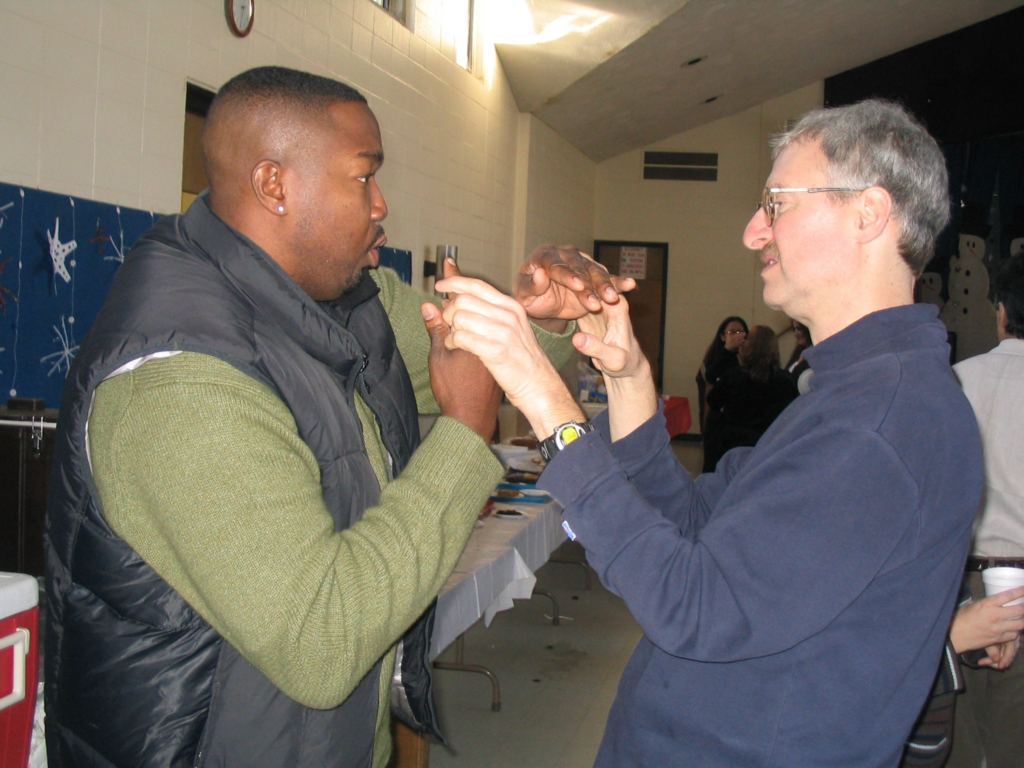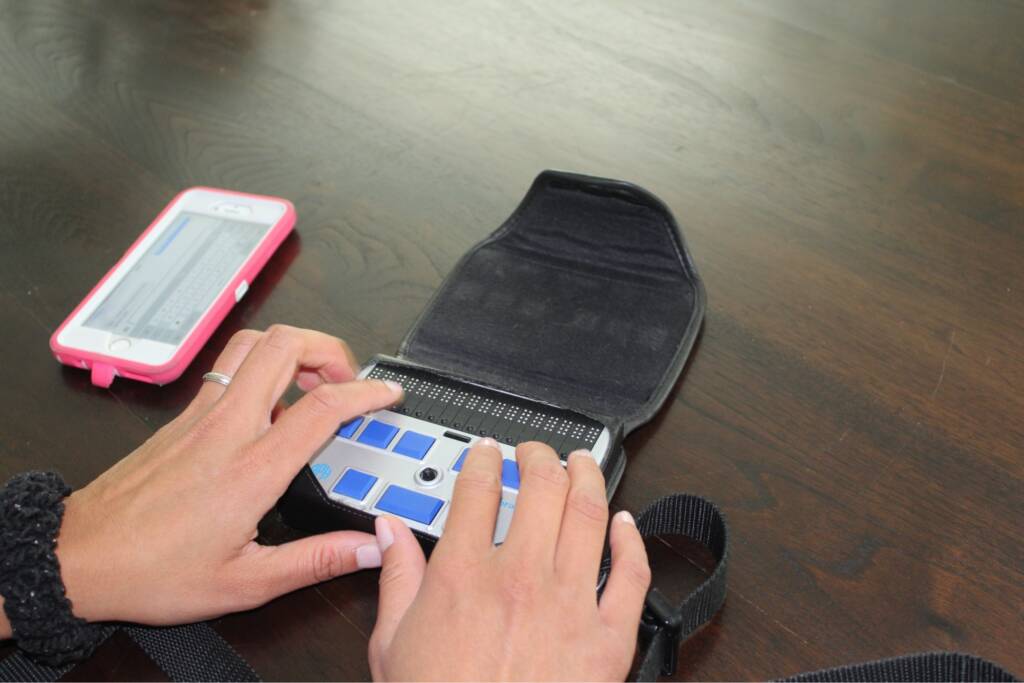Helen Keller National Center is pleased to offer “Communication with Individuals who are DeafBlind”. This module is geared toward professionals who work with individuals who are DeafBlind, but may also be beneficial for family, friends and anyone interacting with an individual with a combined vision and hearing loss. It provides a general understanding of ways in which people who are DeafBlind communicate including various methods, accommodations and/or services such as how to use an interpreter and communication etiquette in the DeafBlind world.
Understanding basic information about communication with people who are DeafBlind is important for anyone who is working with or supporting a person with a combined vision and hearing loss. Clear communication is essential to building a strong and trusting relationship. It is critical to ensure that information is conveyed accurately so that the person who is DeafBlind has the knowledge and insights to make informed decisions and gauge appropriate interactions. Knowing about a variety of methods to communicate, whether it be sign language, use of an electronic device or utilizing a simple “print-on-palm” method, will ensure a relative ease of interaction with a person who is DeafBlind. For professionals and even family members and friends, who are not fluent in sign language or other preferred methods of communication for people who are DeafBlind, knowing the appropriate use of an interpreter is important.
This online module can be used in several ways: as a self-study course, with a small group of family, friends or colleagues, as a supplement to a university course or as a requirement for people working with people who are DeafBlind in medical or care facilities.
Please note that Helen Keller National Center offers this as a standalone course or as part of a more comprehensive course focused on specific populations and issues such as:
-
- Working or interacting with seniors with combined vision and hearing loss
-
- Vocational Rehabilitation Counselors or related professionals working with clients with combined vision and hearing loss
-
- Mental Health professionals working with clients with combined vision and hearing loss
Throughout this training series, we use the term DeafBlind to refer to a diverse population of individuals with varying degrees of combined vision and hearing loss. Helen Keller National Center has historically followed the guidelines that the consumer organization, American Association of the DeafBlind (AADB) established by using the term “DeafBlind”. Recently AADB changed it’s use of the term to “DeafBlind”. For now, HKNC continues to use the term “DeafBlind” but is exploring this with an advisory committee of individuals who are DeafBlind. People who are DeafBlind may have their own preference about how they are identified. Other terms that are commonly used are: combined vision and hearing loss, blind and hard of hearing and dual sensory loss.
Additional Courses

Employment
Working with Individuals who are DeafBlind: A Course for Vocational Counselors and Other Professionals
CRC CE Hours: 2.0
ACVREP CE Hours: 2.0

Introduction to DeafBlind
Overview of Etiologies and Visual Conditions Commonly Associated with Deaf-Blindness
ACVREP CE Hours: 1

